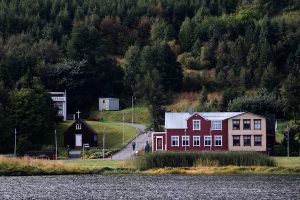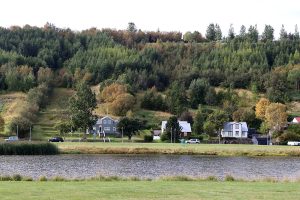Akureyri is best enjoyed on foot. We like to invite you to the oldest part of town – the locals call it Innbær. We call this tour Akureyri – Memory Lane because of the long history of this part of town. We will meet you at Hof, the Cultural and Conference Centre, the large circular building by the harbour, walk through the centre on our way to the oldest part of town, where we end by visiting a local home and having a nice chat. 
The stroll will take around 2 hours and you can take the bus, which is free of charge, back to the centre if you like.
The history of the area stretches back to the 9th century but the name Akureyri is first mentioned in 1526. Starting out as a tiny village it is now the biggest town outside Reykjavík area, with more than18.000 inhabitants.
From there we head for the centre where you can have a look at the shops, restaurants and cafés. You can see the hillside, the former industrial area of town which is today teeming with cultural life offering art galleries, workshops and bars. Furthermore you will see 112 steps leading up to The Akureyri Church (1940) which stands proudly above the town‘s centre.
The narrow strip of land between the hills and the sea is the root of Akureyri. Here you can see many of the old houses, most of them dating from around 1850 though the oldest one, Laxdalshús, is from 1795. Akureyri has been home of some of the best-known authors in Iceland. You will pass homes of two of them, rev. Matthías Jochumsson, (1835-1920) the author of the national anthem, and Jón Sveinsson – Nonni (1857-1944) the author of autobiographical children‘s books. Nonni was a Jesuit priest and spent most of his life abroad.

We will pass some of the prettiest timber houses in town,
such as the theatre and the first primary school along with the old pharmacy and a hospital. These
buildings are filled with stories about people in the former days when a daily shower was not to be taken for granted.
The Akureyri Museum and a lovely little timber church from 1846 stand inviting in the hillside. We will take a look at some gardens and compare them to pictures taken about 150 years ago. Most of the houses in this part of town are from the middle of the nineteenth century. Each and all of them have an interesting story.
This is a slow and easy walk and we will end it by open up one of the houses to give you a chance to visit an Icelandic home. Welcome!
